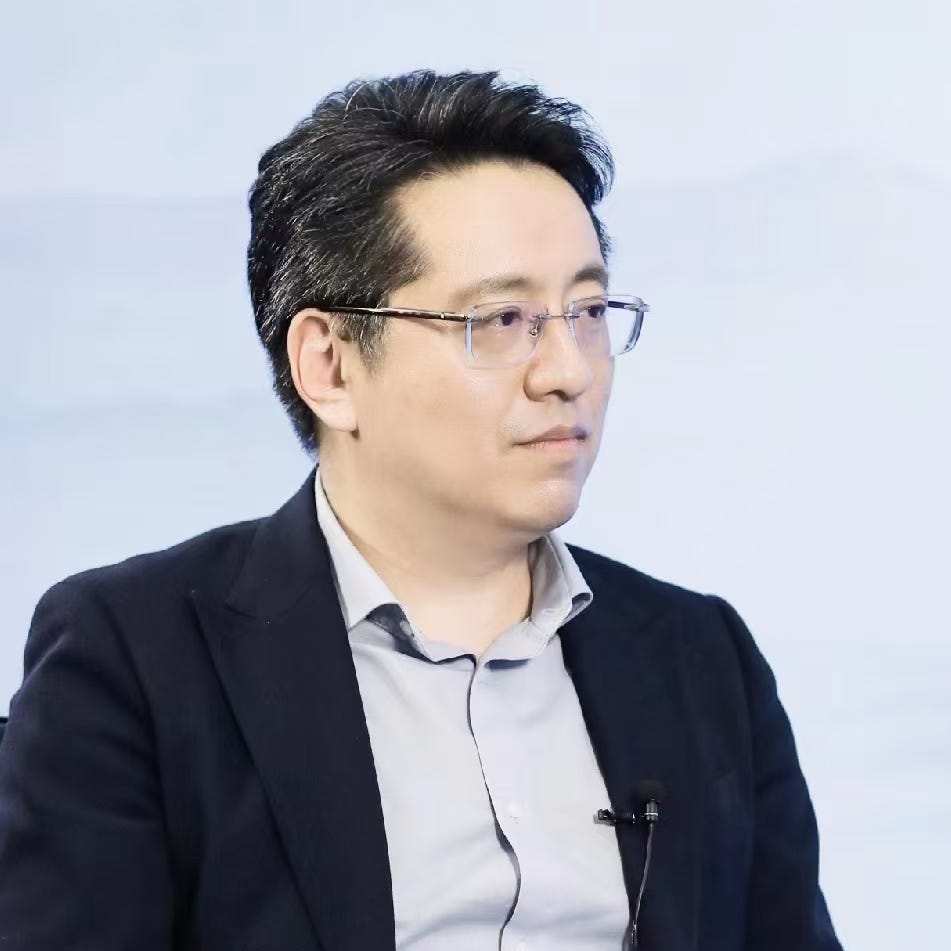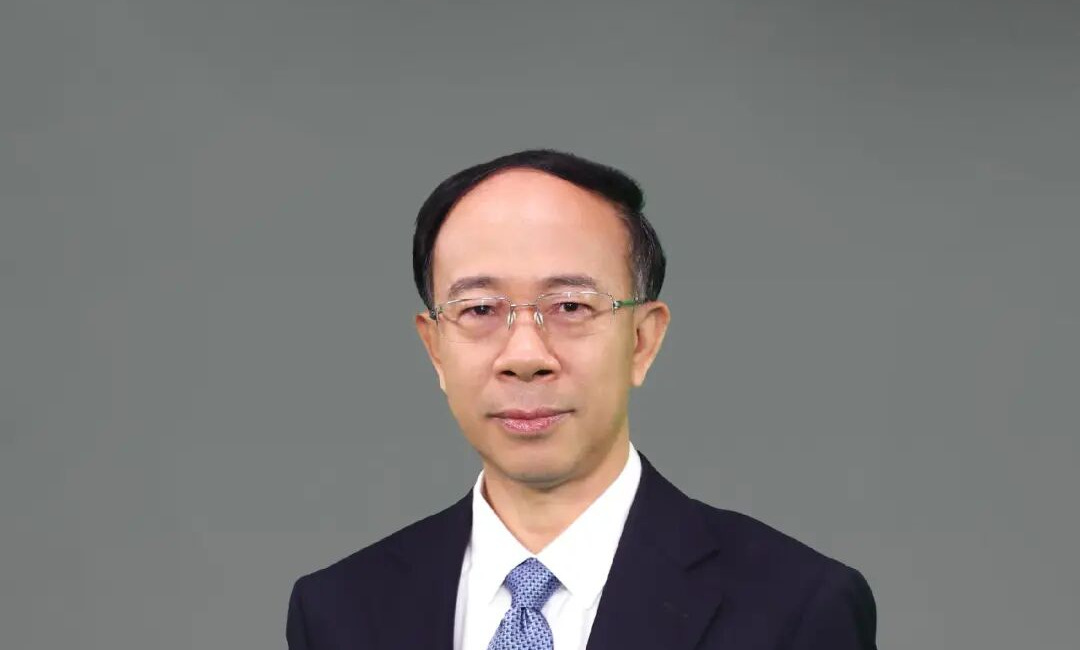China's 4th plenum & 2026-30 plan: what to expect (2)
Former five-year plan drafter flags four structural challenges in 2026-30: industrial, regional, urban–rural, & demographic structures, and says China will not miss the AI-driven industrial revolution
Editor's note: Ahead of the fourth plenum, this newsletter will run a special series mapping what to watch in the 15th Five-Year Plan and why it matters, to help stakeholders connect the dots on China's policy direction for the next five years.
The second piece of the series looks at China's structural challenges and the ongoing technological revolution.
Dong Yu 董煜, a "Scholar-Official" who has worked in state apparatus for 20 years and has participated in the drafting of recent Five-Year Plans, says China will not miss the AI-driven industrial revolution.
Dong's previous roles include serving at the Second Economic Bureau of the Office of the Central Financial and Economic Affairs Commission. He now serves as the executive vice-president of the China Institute for Development Planning, Tsinghua University.
He flags four structural headwinds China will need to navigate in the coming five years: industrial, regional, urban-rural, and demographic structure.
On new quality productive forces, he sees three fronts: emerging industries that already have scale; future industries not yet scaled but set to accelerate (robotics among them); and the digital upgrade of traditional industries, which brings both opportunities and pressure.
His policy advice is to avoid premature constraints when sectors are still in their signal-stage infancy: watch closely, guide softly, and create room for faster take-off in future industries. He reiterates the need to protect SMEs from crushing "involution" pressures and to avoid blunt, blanket regulation that over-interferes with market behavior, echoing points made by Yin Yanlin in our first issue.
He also highlights a line from the July 30 Politburo readout worth underlining: the central government encourages entrepreneurs to "bravely ride the tide and win market initiative with high-quality products and services."
Dong's essay was published on October 13 on the WeChat account "Sanlihe 三里河," reportedly operated by China News Service. Below is my translation of his piece.
中国不会错过AI驱动的产业革命
China Will Not Miss the AI-Driven Industrial Revolution
The "15th Five-Year Plan" period (2026-30) is a critical phase for strengthening the foundation and exerting comprehensive efforts to basically achieve socialist modernization, where structural challenges coexist with opportunities from the technological revolution. Dong Yu, Executive Vice President of the China Institute for Development Planning at Tsinghua University, who has participated in the drafting of recent Five-Year Plans, not only systematically dissects the structural issues in economic and social fields but also shares insights and recommendations on the direction and breakthrough paths of the new round of technological revolution and industrial transformation.
1.What are the biggest structural challenges China's economy and society will face in the next five years? What should be the primary focus?
Dong Yu: The term "structural" should not be interpreted vaguely or generalized under a single label. Instead, it requires deconstructing the issue to identify specific challenges across various domains, enabling the formulation of truly effective measures.
In the next five years, the structural challenges in China's economic and social development span industrial structure, regional structure, urban-rural structure, and demographic structure. Planners will analyze issues across multiple dimensions and set corresponding priorities based on the core problem within each structure.
For example, the core issue in industrial restructuring is how to offset the weakening of traditional growth drivers. The recent emphasis by the central government on "emerging pillar industries" reflects the fact that traditional pillars, especially real estate, are exerting less pull on the economy.
Whether emerging pillar industries can rise during the next five years to become the main engine of growth is the biggest challenge for industrial development.
In regional structure, traditional analyses often focus on balancing development between eastern and western regions. However, with the advancement of functional zoning strategy, regional development planning is becoming more refined.
Thus, the core issue is no longer viewing the central and western regions as a monolithic entity, but assessing whether growth poles in the western regions can effectively drive regional development, whether existing growth opportunities in the central and western regions can be sustained, and whether new growth opportunities can be cultivated.
Regarding the urban–rural structure, although the pace of urbanization has slowed compared with the past, the urbanization rate has reached 67% — a historic milestone. The next step is crucial: as rural residents move into cities, can public services keep pace? The answer will have a decisive impact on the economy, closely tied to real estate, consumption, and more.
The core issue remains how to further strengthen growth momentum during the shift of population from rural to urban areas.
In population structure, a prominent contradiction is that college graduates will continue to hit record highs over the next five years even as the total population declines.
In addition, public-service and infrastructure layouts in some regions will be affected by demographic changes. Although new fertility-support policies have been introduced this year, how much they can stabilize population trends remains to be seen. Meanwhile, the employment pressure created by successive record graduating cohorts will be a major challenge during 2026-30.
2.Against the backdrop of a new technological revolution & industrial transformation, which industries will be the new growth engines during 2026-30? How should government support them?
Dong Yu: Industrial priorities during 2026-30 will undoubtedly center on cultivating new-quality productive forces, especially accelerating the shift from old to new growth drivers.
Among the three main directions of new-quality productive forces, emerging industries have already reached considerable scale; future industries are not yet scaled, but their growth will clearly accelerate in the next stage — robots, for instance, show an unmistakable upward trajectory; and the upgrading of traditional industries faces both opportunities and challenges.
In emerging industries, sectors such as new energy and new-energy vehicles already hold a lead, while others, like high-end equipment, are catching up. During 2026-30, these sectors are expected to play a bigger role in the economy; biomedicine, for example, has already shown positive movement this year.
As for future industries such as brain–computer interfaces and quantum technologies, we cannot yet pinpoint when qualitative breakthroughs will occur, but we should at least make the necessary preparations, including resource input. In the early period of 2026-30, we can concentrate resources on several future industries to avoid missing their development window. This is where planning needs clear positioning and sustained effort.
China's industrial system is comprehensive. Its greatest advantage is that almost any innovation can find an application scenario here.
Even if China is relatively weaker in some technical R&D links, strong application-end support can enable faster piloting, commercialization, and scaling than elsewhere.
What China needs to do is refrain from over-regulating when an industry is still at a nascent, trend-setting stage. Instead, it is necessary to adopt a wait-and-see approach and create an environment conducive to the rapid growth of future industries in their early stages.
Local governments are highly proactive in this area, assessing which industries can be nurtured locally and conducting extensive industrial analysis. This, too, is a major advantage for China — multi-level effort from top to bottom.
I therefore believe that during 2026-30, China will not miss the AI-driven industrial revolution and may even advance faster in certain fields.
Regarding government support, local governments are now placing particular emphasis on talent, so the "15th Five-Year Plan" drafts across regions highlight talent attraction and cultivation, as well as the nurturing of startups, making this a distinctive feature of the coming plan.
In the AI field, the emergence of DeepSeek and others has provided a foundation from 0 to 1, and China is very good at moving from 1 to N. At this stage, it is essential to encourage rapid progress, as this is a core issue related to future national competitiveness.
Now, everywhere is competing to attract talent, and from this perspective, China is one of the most suitable places in the world for entrepreneurship.
With the proactive efforts of local governments and China's annual supply of the world's largest number of STEM (science, technology, engineering, and mathematics) engineers, in terms of success probability, the 2026-30 period will witness another wave of breakthroughs in industry and technology.
3.Extensive anti-involution campaigns have been launched against many sectors. Can Five-Year Plans or other measures address this issue at its root?
Dong Yu: Some sectors see "involution" because they "copy-and-paste" too fast. Part of involution is simply market competition; we need not view it as wholly negative. The problem lies in that certain forms of intensified competition have spillovers that affect people's livelihoods, especially the survival and development of small and medium-sized businesses.
Objectively speaking, some of the policies now in place are not meant to restrict the business of particular platforms or firms, but to protect the health of the entire ecosystem, preventing excessive competition from crowding out space for smaller players.
In industrial development, we cannot let a big tree block all the sunlight; by trimming some branches, smaller trees and plants can better enjoy sunlight and rain. This fosters a symbiotic ecosystem and benefits the long-term development of all kinds of firms.
Today's anti-involution efforts are different from past supply-side reform. Back then, the focus of capacity adjustment was mainly on upstream raw material industries, whereas now it targets consumer-facing sectors directly. This requires enhancing the precision and flexibility of policies.
We need to define more precisely what constitutes malicious competition that merits government intervention, confine it within clear bounds, act only when necessary, and rely more on market-based guidance, avoiding blunt instruments wherever possible.
The closing message of the July 30 Politburo meeting readout deserves close attention: The central government encourages entrepreneurs to "bravely ride the tide and win market initiative with high-quality products and services." This points the way forward: promote high-quality development and healthy competition, rather than fighting endless price wars.
China's 4th plenum & 2026-30 plan: what to expect (1)
Editor's note: Ahead of the fourth plenum, this newsletter will run a special series mapping what to watch in the 15th Five-Year Plan and why it matters, to help stakeholders connect the dots on China's policy direction for the next five years.



